Heavenly Scent & Drought Resistance in One.
The side of the garden towards the neighbors is largely planted with Eleagnus x Ebbingei, now known as Eleagnus submacrophylla or “Chalef” in Garden-French. This shrub was totally unknown to me and when I first saw it in the summer, it didn’t impress me much.
But then came the fall and with it a wonderful perfume – somewhere between carnations, cloves and jasmine – wafting throughout the garden. I looked everywhere for the source of this scent and finally discovered the tiny flowers in the eleagnus shrubs. They bloom from September through December and are thus very popular with bees at that time. In mild climates like here the flowers turn into oblong red fruit by May. The fruit is tasty and sweet when fully ripe. It’s not really worth harvesting on a large scale though because the large pit makes for about 90% of the volume. I eat it like candy when I’m in the garden.
But eleagnus submacrophylla offers even more benefits: It is evergreen, tolerates even extreme heat and drought (although looking somewhat less pretty then), is totally undemanding as to soil quality, and is even reputed to increase the yield of fruit trees if planted between them.
The leaves are light-green and glossy in spring and take on a rough surface with a silvery sheen as summer progresses. It grows quickly, up to about 3 meters high, if not trimmed, and tolerates negative temperatures up to -15℃.
An absolute recommendation for any garden in this type of climate.


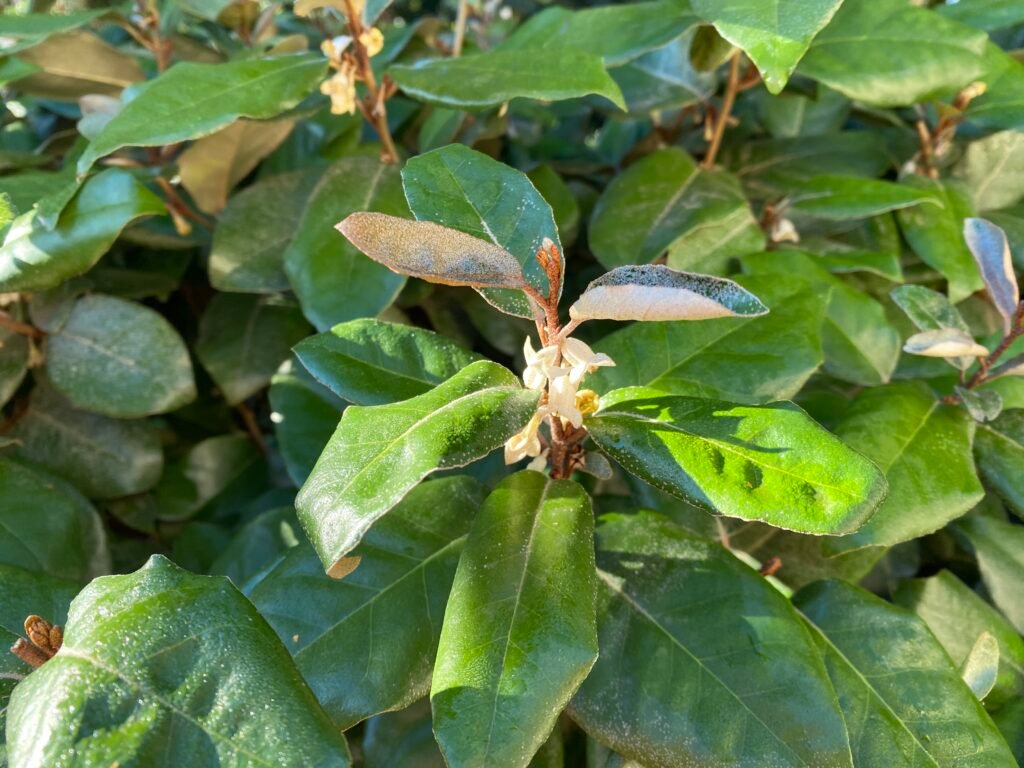
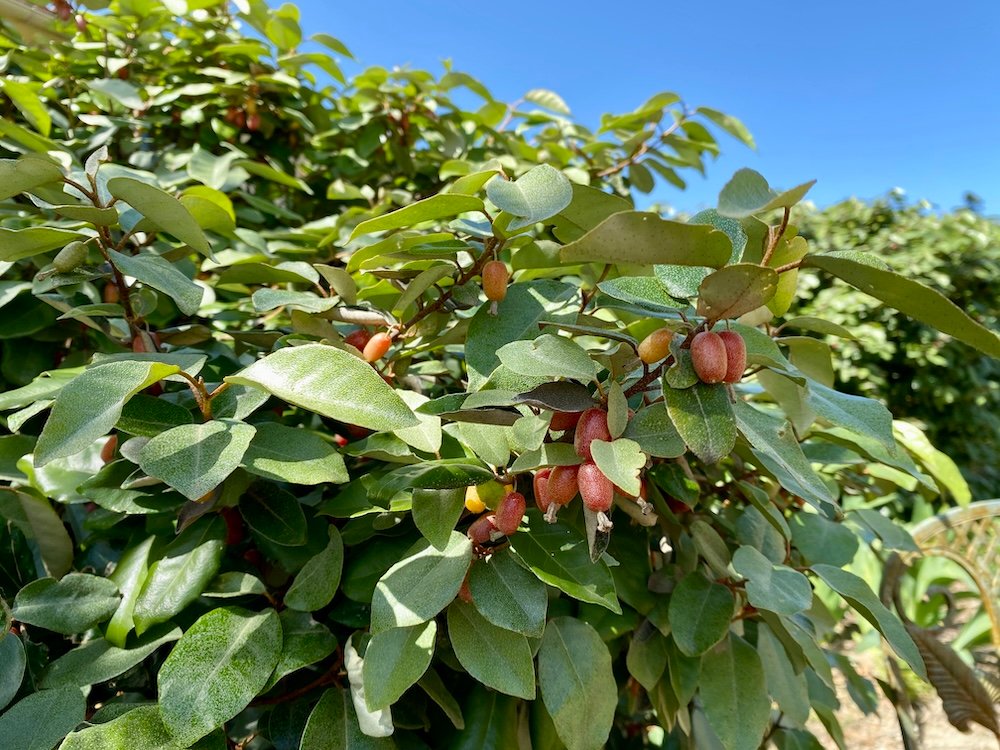
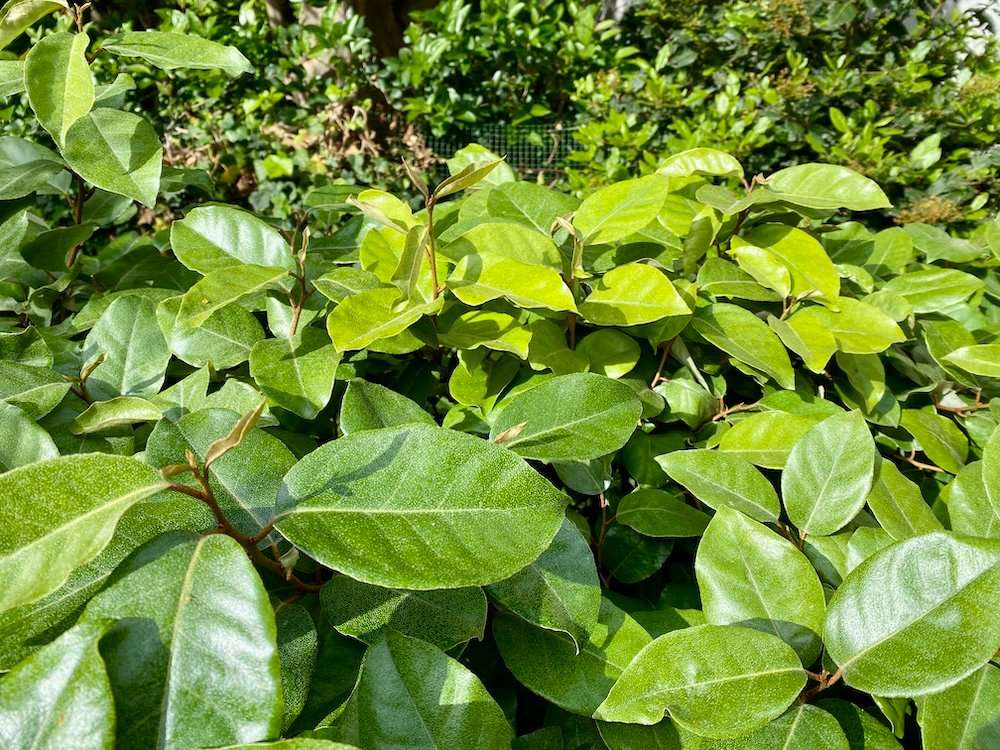
Eleagnus Die-Back?
During the summer of 2024 one of the Eleagnus shrubs in the hedge started to show die-back. Branch after branch turned brown and died. I took them out and cut the whole shrub back, but by September there was nothing to be done but take it out entirely. To this day I’m not sure what happened. As it had been planted on a little hillock and lived there for several years, the cause can’t have been “wet feet” or poor drainage. And the roots did not look as if they were affected by Phytophtora root rot.
I also did not find any signs for verticillium wilt in the branches and the leaves did not wilt and fall off, but turned yellow, then brown, and stayed on. The leaves also did not show any spots as in Coral spot or Fungal leaf spot. They had yellow-white spots that looked like the usual sunburn plants get down here during summer heat waves.
I really would like to know what happened as the other shrubs will occasionally also develop dead branches but so far the damage has been contained by taking out affected branches quickly.

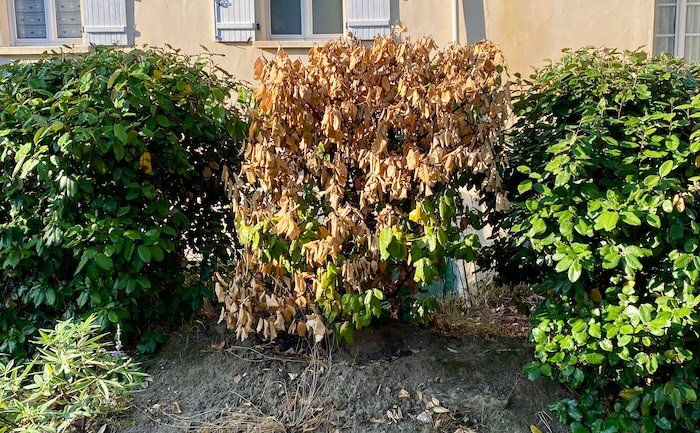
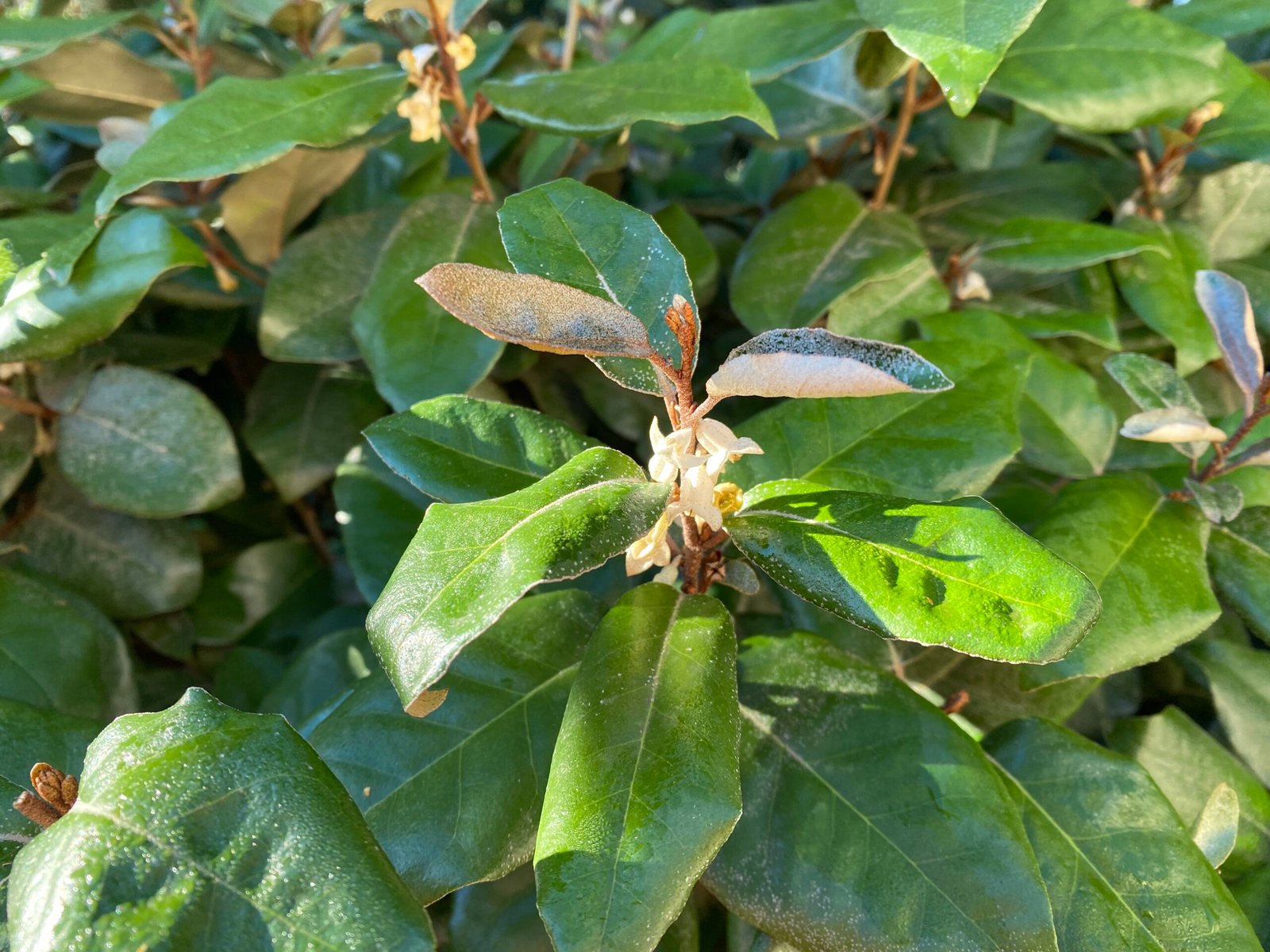
Leave a Reply